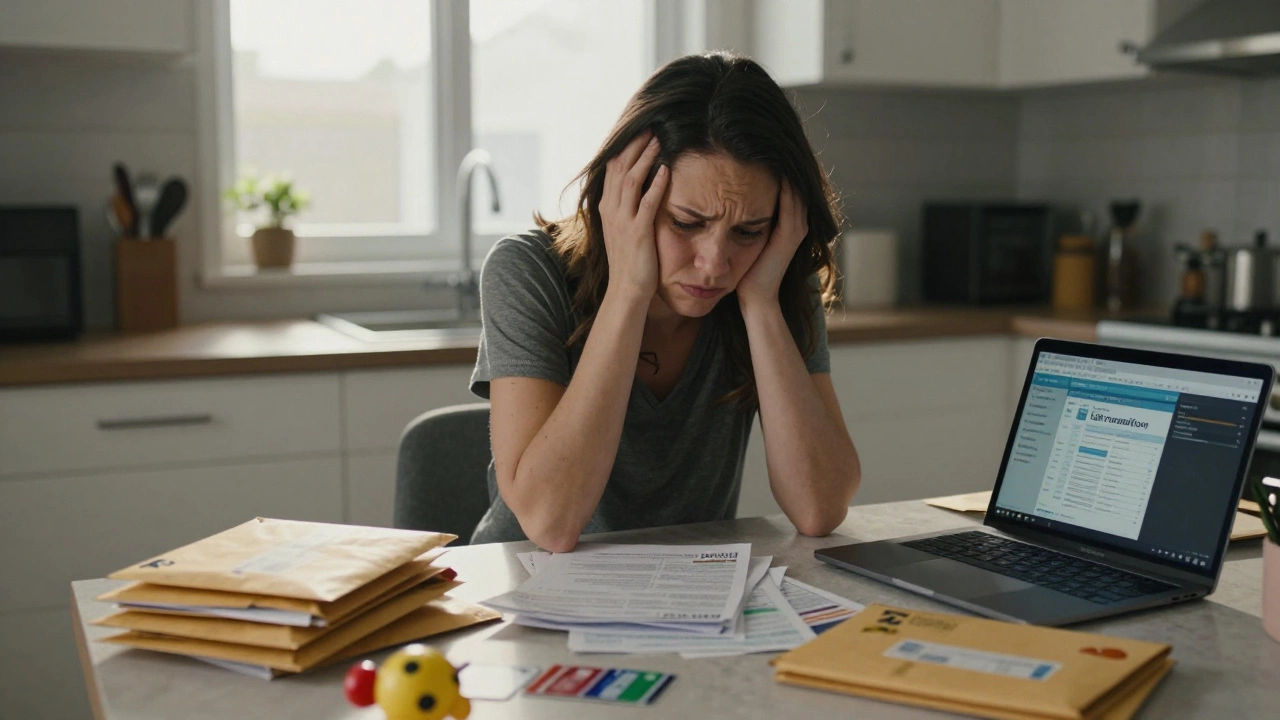Home Insurance Coverage Gap Calculator
Find out if you're underinsured for home repairs and contents replacement. Input your current coverage details to see what gaps exist in your policy.
Coverage Assessment
Most people assume that if they pay for home insurance, their house and everything inside it are fully protected. But here’s the truth: home insurance rarely covers 100%-not even close. Even the most comprehensive policies leave gaps that can cost you thousands if disaster strikes. If you think your policy will replace everything after a fire, flood, or burglary, you’re setting yourself up for a nasty surprise.
What home insurance actually covers
Standard home insurance in Australia typically includes two main parts: building cover and contents cover. Building cover protects the structure of your home-walls, roof, floors, fixed fixtures like kitchens and bathrooms. Contents cover handles your personal belongings: furniture, electronics, clothing, appliances, and valuables.
But even here, there are limits. Most insurers cap the amount they’ll pay out for certain items. For example, a policy might cover up to $1,500 for jewelry, $1,000 for cash, or $500 for a single laptop. If your engagement ring is worth $8,000 and gets stolen, you’ll only get a fraction back unless you’ve added a special rider for high-value items.
Insurers also set a maximum sum insured for your entire home. That’s the total amount they’ll pay to rebuild or replace everything. If you underinsure-say, you estimated your home’s rebuild cost at $400,000 but it actually costs $600,000-you won’t get the full amount needed to fix it. You’ll be left paying the difference out of pocket.
Why 100% coverage doesn’t exist
Insurance isn’t designed to make you rich. It’s meant to restore you to the condition you were in before the loss. That’s called ‘indemnity’. So if your 10-year-old TV was destroyed in a storm, you won’t get a brand-new 8K model. You’ll get what it was worth at the time of loss, minus depreciation. That’s called ‘actual cash value’.
Some policies offer ‘new for old’ replacement, but even that has limits. It usually only applies to items under a certain age or value, and only if you’ve insured your contents for the full replacement cost. If you haven’t, the insurer will still apply depreciation.
Then there’s the deductible-the amount you pay before the insurer steps in. Most policies have a $500 to $2,000 deductible. So even if your claim is approved, you’re still out of pocket hundreds or thousands right away.
Big exclusions most people don’t know about
Here’s where things get risky. Many claims get denied because people assume their policy covers things it doesn’t. These are the top exclusions:
- Gradual damage-like a slow leak under the sink that’s been dripping for months. Insurance only covers sudden, accidental events.
- Natural disasters-floods, earthquakes, and bushfires are often excluded unless you’ve paid extra for cover. In Queensland and NSW, flood cover is optional and expensive.
- Wear and tear-a roof that’s 25 years old and leaks? That’s your problem.
- Home businesses-if you run a bakery out of your kitchen or rent out a room on Airbnb, your standard policy won’t cover business equipment or liability.
- Unoccupied homes-if you leave your house empty for more than 30 to 60 days, coverage can vanish.
In 2024, the Australian Financial Complaints Authority (AFCA) handled over 1,200 complaints about home insurance denials. The most common reason? Policyholders didn’t understand their exclusions.

What you can do to get closer to 100% coverage
You can’t get 100% coverage-but you can get much closer with smart choices:
- Get a professional rebuild cost estimate. Don’t guess. Use the online tools from the Master Builders Association or hire a building surveyor. Underinsuring is the #1 mistake homeowners make.
- Insure contents for replacement cost. Ask your insurer if they offer ‘new for old’ on contents. If not, switch.
- Add scheduled items. For jewelry, art, collectibles, or high-end electronics, list them separately with proof of value (receipts, appraisals). This removes the per-item cap.
- Buy flood and bushfire cover. If you live near a river, creek, or bushland, don’t skip this. It’s not cheap, but it’s cheaper than losing your home.
- Review your policy every year. Home renovations, new purchases, or inflation can change your needs. A policy from 2022 is probably outdated in 2025.
Real-life example: What happens when coverage falls short
A family in Logan, Queensland, had a pipe burst in their bathroom in early 2025. Water soaked through two floors, ruined flooring, cabinetry, and their entire entertainment system. They thought their $1.2 million policy would cover everything.
Turns out, their rebuild cost was $1.4 million. Their contents were insured for $80,000, but their TV, sound system, and laptop were worth $22,000 combined. The policy only paid $10,000 for contents because it used actual cash value, not replacement cost. They also didn’t have flood cover, so the water damage claim was partially denied.
In the end, they were out $180,000. They had to take out a personal loan to fix their home. All because they assumed their policy was ‘full’.

How to check your coverage right now
Grab your policy document and answer these five questions:
- Is my building sum insured based on current rebuild cost, not market value?
- Do I have ‘new for old’ cover on contents, or just ‘actual cash value’?
- What are the per-item limits for jewelry, electronics, and cash?
- Do I have separate cover for floods, earthquakes, or storm damage?
- Have I listed any high-value items separately?
If you answered ‘no’ to any of these, your coverage isn’t as complete as you think.
What happens if you don’t have enough cover?
When disaster hits and your insurance doesn’t cover the full cost, you have three options:
- Pay the difference yourself-often tens of thousands.
- Delay repairs, which can lead to more damage and lower resale value.
- Take out a loan, which adds interest and long-term debt.
None of these are good. The best move? Fix your coverage before you need it.
Bottom line
Home insurance doesn’t cover 100%. But it can cover 90%-if you know how to ask for it. Most people pay for a policy and forget about it. Smart people check it every year, adjust for inflation, add exclusions they need, and make sure their sum insured matches reality. Don’t wait for a broken pipe or a stolen TV to realize your policy is full of holes. Review it now. Talk to your insurer. Ask for a written summary of your coverage. And don’t let assumptions cost you your home.
Does home insurance cover everything in my house?
No. Home insurance covers your structure and personal belongings, but only up to set limits. High-value items like jewelry, art, and electronics often have per-item caps. Items damaged by gradual wear, floods, or earthquakes are usually excluded unless you pay extra. Always check your policy’s fine print.
What does 100% coverage mean in home insurance?
There’s no such thing as 100% coverage in home insurance. Even the most comprehensive policies have exclusions, deductibles, and payout limits. ‘Full coverage’ usually means you’ve added all available optional covers (like flood or contents replacement cost), but you still won’t get paid for everything-especially if you didn’t insure your home for its true rebuild cost.
How do I know if I’m underinsured?
Compare your building sum insured to the current rebuild cost. If you haven’t updated your policy since 2020, you’re likely underinsured. Construction costs have risen over 25% since then. Use the Master Builders Association’s online calculator or hire a building surveyor. If your contents sum is less than what you’d spend replacing everything new, you’re underinsured there too.
Is flood cover included in standard home insurance?
No. Flood cover is almost always an optional extra in Australia. Even if your home isn’t in a known flood zone, heavy rain and stormwater runoff can cause serious damage. If you live near water, in a valley, or in an area with poor drainage, flood cover is essential. Check your Product Disclosure Statement (PDS) to confirm whether it’s included.
Can I get my home insurance to pay for a brand-new replacement?
Only if you’ve chosen ‘new for old’ replacement cover for contents. This means the insurer replaces your damaged item with a brand-new one of similar type and quality, regardless of its age. But this usually only applies if you’ve insured your contents for their full replacement value. If you chose ‘actual cash value’, you’ll get less due to depreciation.
What should I do if my claim is denied?
First, get a written explanation from your insurer. Then check your Product Disclosure Statement (PDS) to see if the reason matches an exclusion. If you believe it’s unfair, you can lodge a complaint with the Australian Financial Complaints Authority (AFCA). They handle disputes for free and resolved over 70% of home insurance complaints in 2024 in favor of the consumer.
If you’ve been putting off reviewing your home insurance, now is the time. A quick 20-minute check could save you from a financial disaster down the track. Don’t wait for the next storm to find out your policy doesn’t do what you thought.






